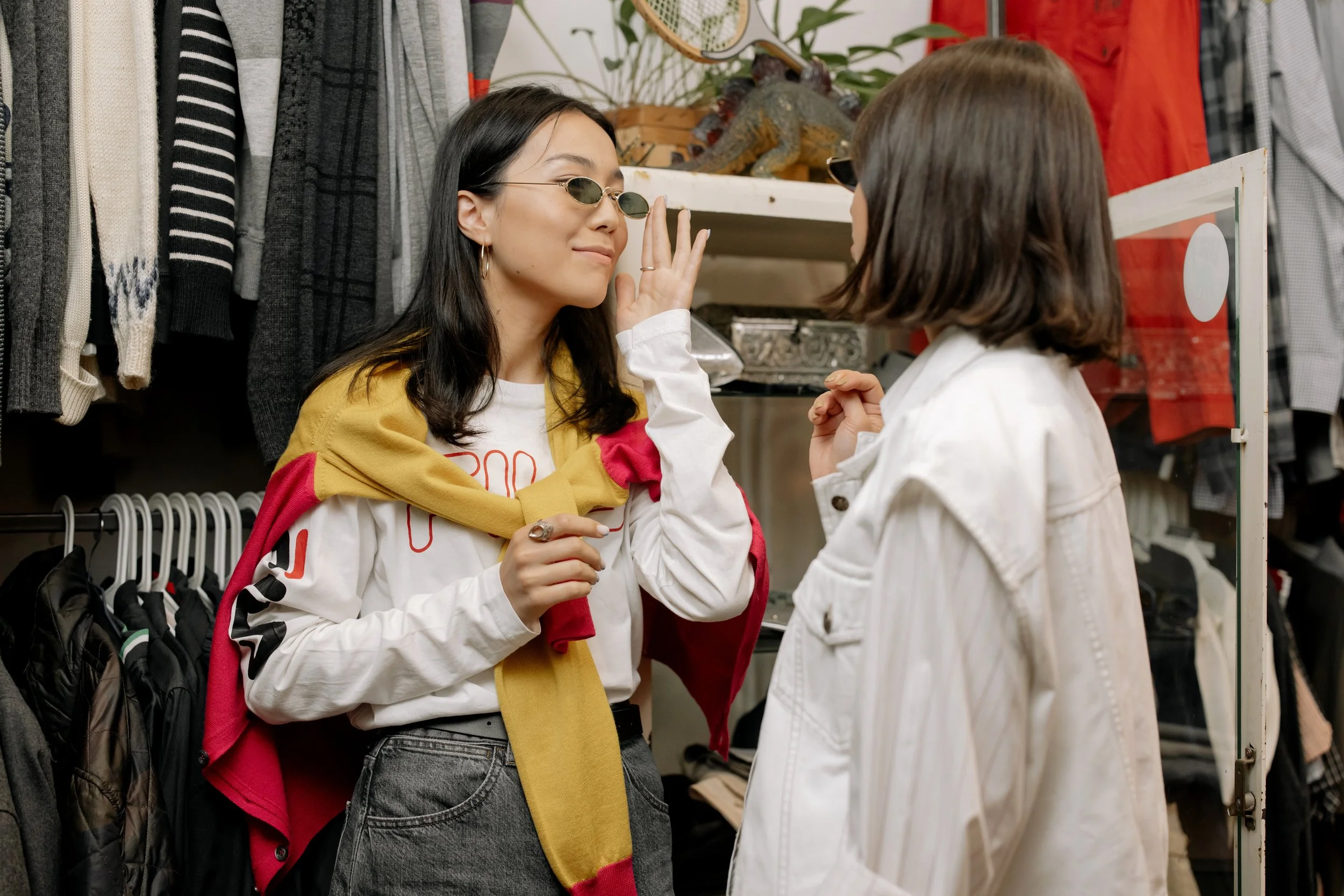Memory and Clothing: Unravelling Ties From the Past

Unravelling Ties From the Past
Cover Photo by Vlada Karpovich on Pexels.
The prom dress from your final night of being a high school senior. The blazer you wear from the first day on your first full-time job. The swimsuit from a stellar vacation years ago. The clothes we wear for special occasions and the clothes we wear in certain periods of our lives tend to carry a certain, special sentimental value. At least, for me, through the transitions of graduating high school and university, moving from my childhood house and in between the various dorms and apartments I lived in during my university years, and even now I prepare to move cities, letting go of my old clothes has always felt like letting go of tiny pieces of memory.
Fashion and history are often intertwined, despite many disparaging the former’s contribution due to its societal value as ‘frivolous’. Using a piece of vintage clothing, we can often trace back to many answers we might have about the past: What kind of fabrics were most commonly used? How were they manufactured? For what reason were these garments constructed—a festival? Everyday wear for a rich person, a merchant, or a servant? What were the trends at the time, and what social, political, or economic events influenced them? Who owned these clothes and why would they wear them? We take the answers from these questions and use them to weave a rich historical narrative. We also ascribe a certain importance to the garments worn by celebrities—hence, the reason celebrities such as Kim Kardashian wearing a dress formerly owned by Marilyn Monroe caused an uproar, with many degrading Kim Kardashian despite Marilyn also experiencing similarly harsh criticism from the public in her time. In death, her clothes mean something more than what she was known for, alive. When we are able to preserve and keep historical clothes, we can learn more about the people from the past in a way that is closer to the present day. Fashion historians and institutions such as museums are key to keeping these fragments of the past alive.
Photo by Sam Lion on Pexels
If the preservation of historical, vintage garments means to keep knowledge of the past alive, what does it mean when we let go of clothes from our personal closets? I often struggle with this question—to let go of the prom dress I wore six years ago feels like an erasure of my seventeen year old self (which is why it still hangs up in my childhood home). I’ve often found myself putting away clothes I no longer like or fit into in bins, bringing them from old to new apartments. “I’ll find a place to wear this”, I promise myself, looking at the red-plaid jacket with plastic leather sleeves, or the now ill-fitting dress I wore to a wedding years ago.
‘If you love fashion like me—and I think you do—you’ll be throwing out a lot of clothes. You need to learn how to get good at that’.
Sage words coming from the owner of a vintage store, after I remarked that I’m starting to gravitate towards larger, oversized jackets instead of the skin tight ones I preferred in university. And it’s true, over the past six years I’ve found my tastes change again and again, as I’m exposed to new trends, online inspiration, and friends with strong aesthetic tastes.
Photo by cottonbro studio on Pexels
I’ve added new rules; a jacket bought means a jacket sold, temporary bans on jewelry purchases, no more keeping of clothes I dislike just because they are in good condition. I’ve researched how to recycle and donate clothes in an ethical, efficient way, become more thoughtful on potential purchases, and gathered a small assortment of clothes I can wear every day. This has been a particularly hard lesson after gaining weight in the past year. It meant needing to re-learn what kinds of clothes I genuinely enjoy and saying goodbye to pieces I loved, and finding the patience to keep thrifting for basics that felt comfortable with my personal taste. I learned how to let go of clothes that used to be part of my identity without feeling like I was disrespecting or disappointing who I used to be. As I donate, sell, and scrap old clothes, I find it easier to let go of the sentimental pieces that I valued highly. I hope that whoever gets my old clothes wears them just as I had; with love and care. Saying goodbye, in all its aspects, is not a painful severance, but the closing of the door on times I’ll look back on with fondness and with love.
Minh Truong is from Vancouver, BC and is currently finishing up her Communications degree at Carleton University. When not writing, reading, or drinking a chai latte with oat milk (lactose intolerants unite!), you can catch her annoying her very handsome cat. | IG: @minhtruong_






